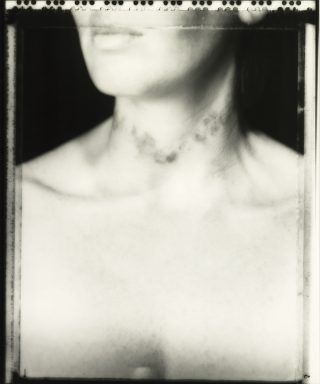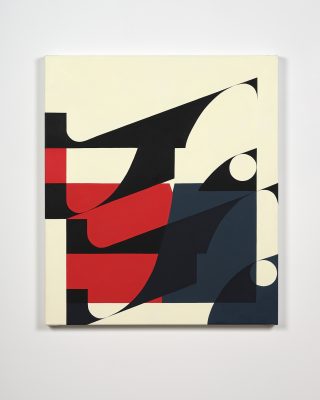Encountering the work of Christina Pataialii for the first time, I was struck by her profound affinity for paint. I make this comment with a measure of trepidation, aware that the vast majority of artists choosing to concentrate on painting feel a strong connection with the medium. Few, however, wield paint with the conviction of Pataialii. Loaded with a multiplicity of smears, splatters, and mists of pigment, her works immediately suggest that their maker not only knows what she is doing but also lives to do it.
It comes as no surprise to discover that Pataialii has been working with paint since she was a kid. Her father is a house painter and for years she has gone out on jobs with him, gaining an understanding of his materials, tools, and techniques. Her respect for his work is absolute. It is her first tradition, predating and superseding in significance her investigations of ‘fine painting’. Her ongoing use of house paint is partly aimed at keeping down the costs of experimentation, but it also celebrates the artistry of so many painters who would never think of themselves as artists. (It is decidedly not a quotation of the use of similar materials by the likes of Colin McCahon.)


1. Christina Pataialii, slow jamz till midnight (installation view), Blue Oyster Art Project Space, 2017. 2. Christina Pataialii, slow jamz till midnight, 2017.
Aspects of Pataialii’s handling likewise connect with house painting. Her works feature rollered arcs, planes of solid colour, and crisp forms created with masking tape. She further cues the relationship by painting on stretched drop sheets, tacking her works up with tape, extending beyond their bounds. For her latest show, slow jamz till midnight, at Ōtepoti’s Blue Oyster, she has covered a wall with rough, mint green strokes that might equally be the first steps towards a perfect finish or a nod to the scumbled ’90s feature wall. Pataialii denies the containment of the canvas, as well as the whiteness that dominates most art galleries, creating spaces of immersive vitality.
Pataialii enlivens her painting by way of both additive and subtractive processes. She scratches into smears of paint, as if carving into the bark of a tree or the sun-softened plastic of old school desk. Using spray cans, she creates spontaneous loops and zigzags. The effect, again, is celebratory. Her quick gestures acknowledge street art and the calligraphic qualities of graffiti at once earnestly and playfully; they are a long way from the self-consciously minor sprayed marks one sometimes finds in the contemporary art space.

Christina Pataialii, Bite fight – Mike Tyson, 2017.
In some works, Pataialii’s gestures coalesce into recognisable symbols of her everyday life or childhood: Kenny Rogers, Mike Tyson, tigers pulled from plush blankets. In others, they are more abstract, only faint traces of real-world elements appearing: the sweep of a banana, for instance, or the lavender of a still from a favourite Simpsons episode. All her works, however, emphasise the physicality and the expressive potential of paint—now with rapid smears of algal green, now hazy black lines seeping through a sky blue overcoat, now opaque expanses of fleshy pink and brown.
Visiting Auckland Art Gallery Toi o Tāmaki with Pataialii, I witness a different aspect of her enthusiasm for the expressivity of her medium. (The artist has chosen the location; it has been several weeks since her last visit and she is itching to go again.) As we walk the rooms together, she responds to the material of each painting, paying little attention to any overarching image. She homes in on discreet passages she believes have been hard won. She delights at strokes she knows have been laid down by chance and gingerly avoided thereafter for fear of spoiling them. She is in dialogue with the absent makers.

Christina Pataialii, slow jamz till midnight – remix (installation view), Whitecliffe College of Arts & Design, 2018.
I am accustomed to thinking of the painting as a performance document, a record of the processes that have yielded it. I am practised at sizing up the minutiae. In Pataialii’s presence, however, I feel at once too strict and too lax in my engagement. She reminds me that the performance of painting is fundamentally communicative. She is present in her works—not an extrinsic creator of taciturn things, but an inherent voice. Her painting is a way of speaking, as dependent on whispering films, exclamatory strokes, and guttural daubs as it is on carefully articulated signs.
—Ōtepoti and Tāmaki Makaurau, November 2017
*
Essay commissioned by Christina Pataialii.




